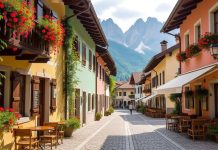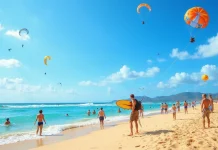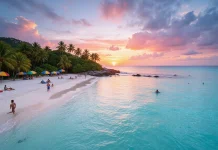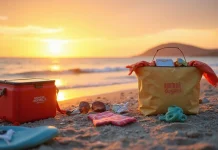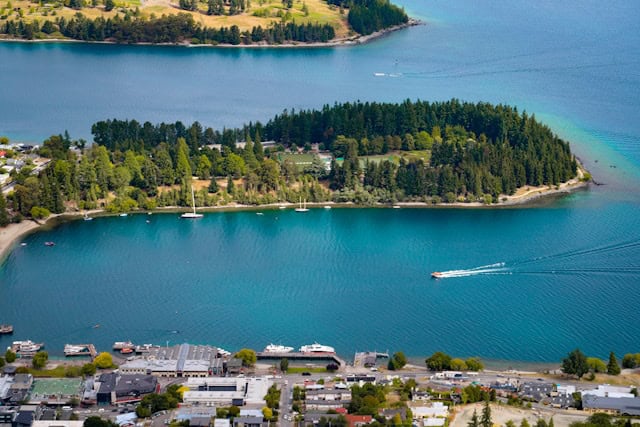Consider Your Camping Style
Identify Your Preferences
Before embarking on an adventure, consider what kind of camping experience you desire. Are you a solitude seeker or someone who thrives in social settings? Do you prefer the rustic nature of a primitive site or the modern conveniences of a developed campground? Understanding your preferences will help narrow down your choices significantly.
Backcountry vs. Frontcountry
Backcountry campsites are perfect for those looking to escape civilizations and immerse themselves in nature’s tranquility. These sites are often isolated and require you to hike or paddle to reach them. Conversely, frontcountry sites are easily accessible by car and usually come with a variety of amenities, making them ideal for families or those new to camping.
Camping Duration
The length of your stay can influence the type of campsite you choose. For a weekend getaway, you might prioritize convenience and accessibility. For longer trips, consider a site that offers a variety of landscapes, trails, or nearby attractions to keep you entertained.
Research Potential Campsites
Online Resources
In today's digital age, finding the perfect campsite is just a click away. Websites and apps dedicated to camping offer extensive databases of campsites, complete with reviews, photos, and details about amenities. Websites like Recreation.gov, The Dyrt, and Hipcamp can provide valuable insight into potential campsites.
Check Reviews and Ratings
Reading reviews from fellow campers can offer a wealth of information that you won’t find on official park websites. Look for recent reviews to get the most current information, as facilities and conditions can change over time.
Guidebooks and Maps
Sometimes technology isn't the end-all, be-all solution. Traditional guidebooks and detailed maps can uncover hidden gems not listed online. They often include information about trails, wildlife, and detailed descriptions of the landscape.
Visitor Centers and Local Knowledge
Visitor centers are often staffed with knowledgeable locals who can provide tips and current information on trail conditions, recent wildlife sightings, and more. Don't hesitate to ask them for recommendations based on your interests and needs.
Evaluate Campsite Amenities and Facilities
Essentials vs. Luxuries
Consider what amenities you’ll need during your stay. Is running water necessary, or can you manage with what you bring along? Are restrooms important, or are you comfortable with primitive options?
Water Supply
Access to clean water is crucial. If a campsite doesn't offer potable water, ensure you bring enough or have the means to purify natural water sources.
Restroom Facilities
Some campsites offer flush toilets and showers, while others provide only pit toilets. Determine your comfort level with these options before choosing your site.
Additional Features
Features like picnic tables, fire rings, electrical hookups, and BBQ grills are additional amenities that might make your camping experience more comfortable. Decide which of these are necessary for your trip.
Select the Right Environment
Climate and Weather Considerations
The time of year and local climate can greatly impact your camping experience. Research the weather forecast and seasonal changes of your chosen area to pack appropriately and plan activities accordingly.
Temperature Fluctuations
Be aware of temperature variations, which can be significant even between day and night. Bring suitable clothing and camping gear to ensure comfort no matter the conditions.
Landscape and Terrain
The type of terrain can influence your choice of campsite. Whether you're setting up in a lush forest, spacious meadow, or rugged coastline, each offers unique advantages and challenges to consider.
Topographical Features
Look for features like windbreaks, proximity to water, and level ground. These aspects can improve your comfort and safety during your stay. Avoid areas prone to flooding or strong winds.
Safety Considerations
Wildlife Awareness
Understanding the local wildlife can prevent unwanted encounters. Ensure you follow guidelines to secure food and dispose of waste properly to avoid attracting animals.
Bear Country Protocols
In regions inhabited by bears, specific precautions must be taken such as storing food in bear-proof containers or hanging it from trees at a safe distance from your sleeping area.
Campsite Regulations
Familiarize yourself with the rules and regulations of the campsite or park. These rules are in place for your safety and the preservation of the environment and may include limits on campfire use, quiet hours, and wildlife interactions.
Emergency Services and Cell Reception
Knowing the location of the nearest emergency services and whether there is cell reception can be crucial in case of an emergency. Inform someone of your plans and expected return if you're camping in a remote area.
Consider Accessibility and Permits
Reservation Policies and Permits
Some popular campsites require reservations, especially during peak seasons. Ensure you understand the booking process and secure your spot in advance if necessary.
First-Come, First-Served Sites
Many campsites operate on a first-come, first-served basis. Arrive early to secure a desirable spot, particularly in high-demand areas.
Accessibility for All Campers
If you or someone in your group requires accommodations for mobility, ensure your chosen campsite can accommodate those needs. Look for sites with accessible ramps, restrooms, and paths.
Proximity to Activities and Attractions
Nearby Trails and Outdoor Activities
Choosing a campsite near trails or recreational activities can enhance your camping trip. Whether you're into hiking, fishing, or kayaking, consider your interests and select a site that offers easy access to those activities.
Sightseeing and Scenic Views
For those who enjoy photography or simply soaking in the scenery, look for campsites that offer stunning views or are located near natural wonders.
Cultural and Historical Sites
Some campsites are located near cultural or historical sites, enabling you to incorporate educational elements into your adventure. Exploring local heritage can add depth to your camping experience.
Leave No Trace Principles
Minimize Environmental Impact
Practicing Leave No Trace principles ensures the preservation of natural beauty for future visitors. Plan ahead and prepare, dispose of waste properly, and respect wildlife to minimize your impact.
Waste Management
Always pack out what you pack in. This includes trash, leftover food, and other waste. Consider how you can reduce waste before your trip by opting for reusable items.
Conserving the Environment
Stick to established paths and campsites to preserve the natural environment. Avoid picking plants, disturbing wildlife, or carving into trees.
Personal Comfort and Setup Tips
Campsite Layout
Strategize your campsite setup to ensure maximum comfort. Consider wind direction, sun exposure, and proximity to water when positioning your tent and cooking areas.
Sleeping Arrangements
Choose a flat surface free of rocks and roots for your tent. Use a durable tarp or groundsheet underneath for added protection against moisture and wear.
Campfire Safety and Cooking
Ensure your campfire is in an open area away from flammable materials, and keep it small. Always have water or a shovel nearby to extinguish embers thoroughly.
Cooking Equipment
Bring the necessary equipment for your preferred method of cooking, whether it's a portable stove, grill, or camping oven. Plan meals ahead and consider storage solutions for perishable items.
Consider the Season
Summer Camping
Summer offers the warmth and extended daylight perfect for a host of outdoor activities, but also poses challenges like bugs and crowded spots. Choose sites with shade and access to water to cool off when temperatures rise.
Managing Bugs
Consider campsites with natural deterrents to insects, such as breezy hilltops or open fields away from standing water. Alternatively, bring repellent and bug screens for added protection.
Winter Camping
For those looking to embrace the chill, winter camping offers serene landscapes and fewer crowds. But preparation is key. Ensure you have the right gear to stay warm and dry.
Cold Weather Gear
Invest in a high-quality sleeping bag rated for low temperatures, and layer clothing to trap heat efficiently. Opt for four-season tents capable of withstanding snow load and strong winds.
By considering these factors, you’ll be well-equipped to choose the perfect campsite for your needs. Each camping trip is unique, so feel free to adapt these guidelines to fit your specific interests and requirements. Happy camping!


